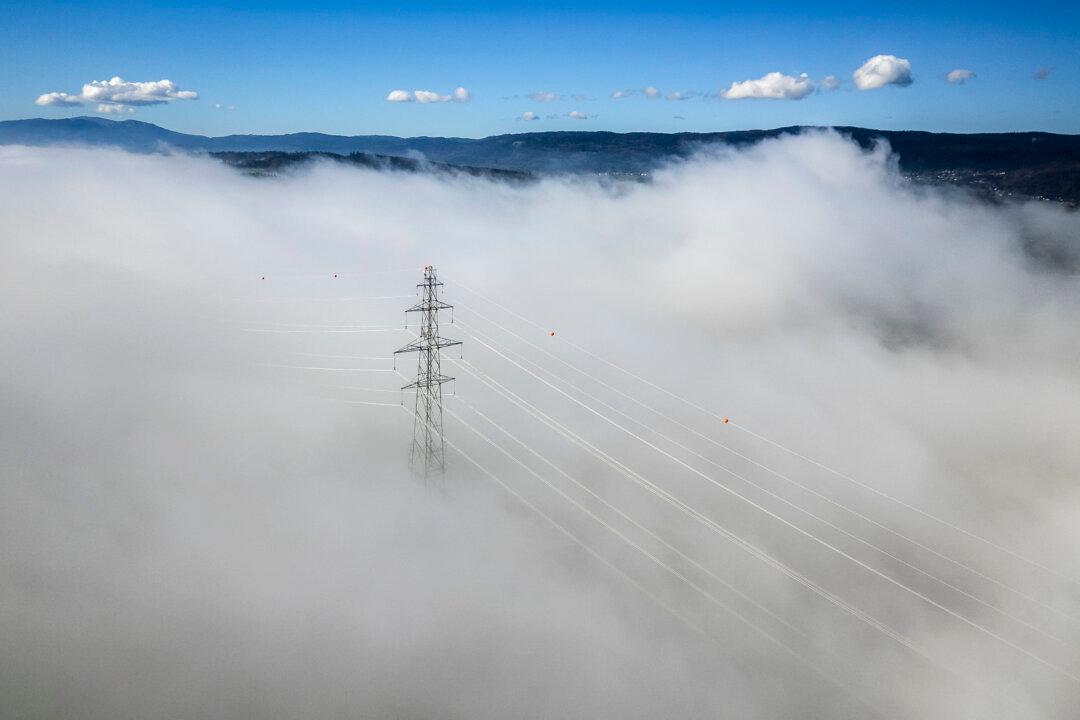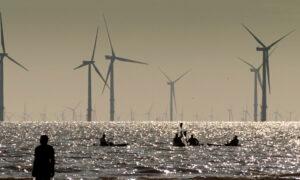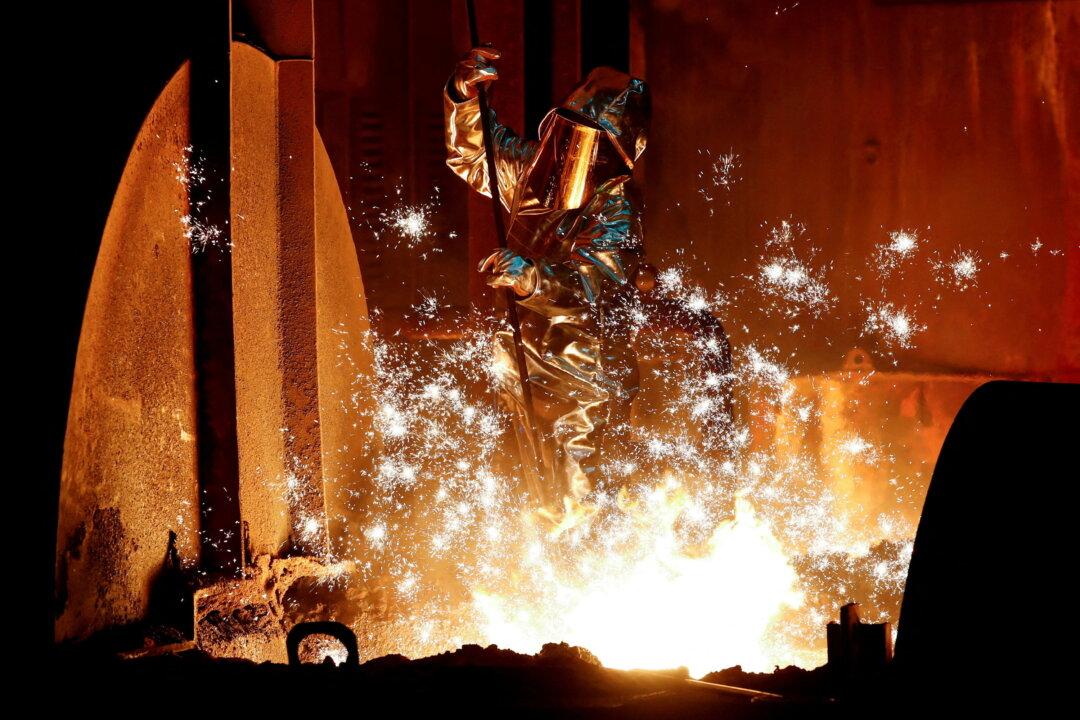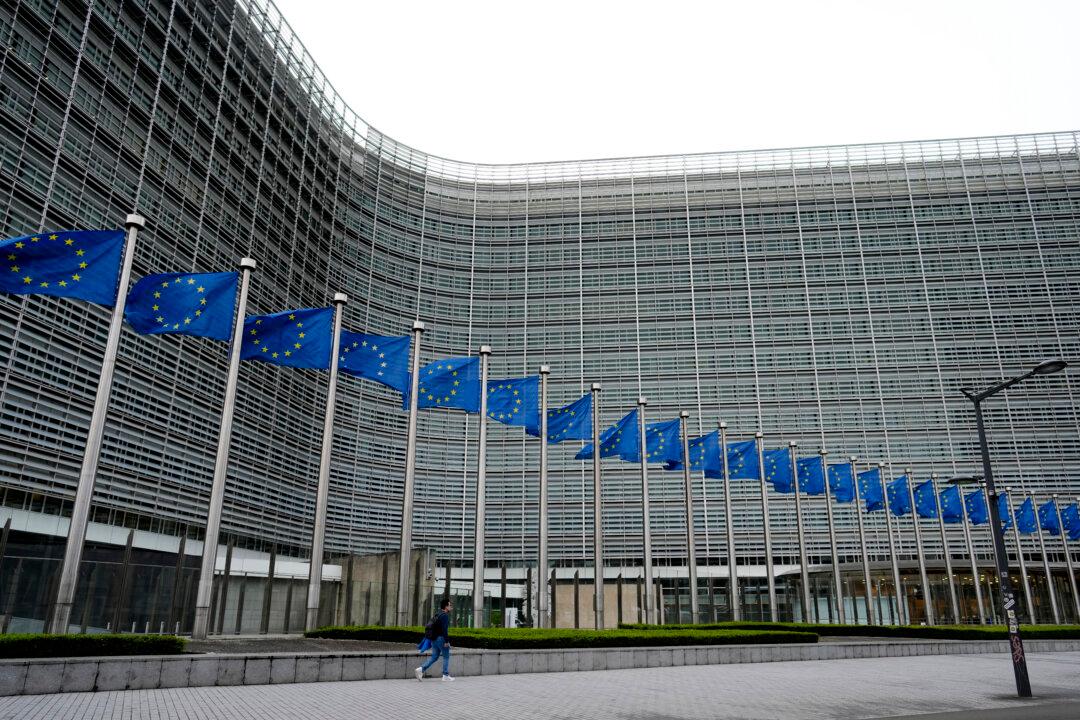Europe’s ambition to reach net zero emissions by 2050 hinges on ramping up solar and wind power, potentially tripling the amount of electricity crackling through the power grid.
However, its grid is a network built for steady, centralized, coal-fired power. Turning this into one capable of managing vast, intermittent flows is the biggest engineering challenge since its inception.
And the potential costs of that infrastructure upgrade, without including the price tag of the solar arrays and wind farms, are increasingly being laid bare.
Recent estimates put total costs for upgrading transmission lines across continental Europe at between 2 trillion euros and 3 trillion euros ($2.2 trillion to $3.3 trillion) by mid-century.
Samuel Furfari, senior official at the Energy Directorate-General of the European Commission from 1982 to 2018, told The Epoch Times, “The problem is that if you multiply renewable energy, you need to multiply the interconnections [between countries].”
He said decentralized renewables demand new interconnections among hundreds of thousands of sites, each requiring costly copper cables and substations, driving the overall price tag ever higher.
“That means that you need to build new lines to interconnect all those decentralized plans, and they need to be linked ... with cables, with copper cables, and this is very expensive, so it’s why they say that the price will explode,” Furfari said.
With binding net zero laws in place across the European Union’s 27 member states and the UK, the rapid rollout of renewables means that networks originally designed for fossil fuel power flows need to be upgraded to cater to electricity generated by renewables.
It warned that Europe is competing with other countries for the materials and equipment necessary to develop its grids, creating major challenges in securing necessary inputs as global demand surges and supply chains are put under increasing strain with the push for increased renewables.
Europe’s networks were built during the fossil fuel era, designed for alternating current-based, one-way flows from large power stations to consumers.
European transmission system operators, responsible for high-voltage transmission across 36 countries, must now plan, build, and operate a fundamentally different system to handle variable renewable output, which produces both alternating current and direct current power.
Grid reinforcement and the installation of specific equipment and updated technologies will be required.
Nearly half of Europe’s transmission lines are also more than 40 years old, with the distribution networks already spanning more than 9 million kilometers (5.6 million miles).
The authors of the report wrote that achieving a “clean power system” by 2035 would represent a “critical milestone in the successful decarbonisation of Europe’s economy and the electrification of key sectors.”
However, they said that “significant queues of solar, wind, and storage projects waiting for grid connections have built up across Europe,” and that the volume of renewable energy projects waiting to connect far outstrips the additional installation required to reach 2030 national energy and net zero targets.
Dreams for Power in 2030
According to Beyond Fossil Fuels, five nations have directed their transmission operators to consider scenarios in which renewables replace nearly all gas-fired electricity generation by 2035.Those transmission system operators are Energinet in Denmark, Fingrid in Finland, Eirgrid in Ireland, National Grid in the UK, and Litgrid in Lithuania.
Critics of these rigid and expensive government-imposed targets say grid planners will struggle to meet transmission needs for the wind and solar electricity generation that is scheduled to replace power from nuclear and gas.
Andy Mayer, chief operating officer and energy analyst at the free market think tank Institute of Economic Affairs, told The Epoch Times by email that he believes that expanding the grid according to governments’ current net-zero timeline is not realistic.
He said that there are several reasons for this, “from overall cost, to inflating that cost by forcing the issue beyond the capacity of supply chains to adapt, to resource constraints, to the global trade situation aggravating that issue.”
“Where deadlines dominate price signals in policy, prices rise,” Mayer said.
“The unreality of the proposals are driven by politicians conflating net-zero [mandates] with picking renewables as the supply winners of choice, rather than being cautious and technology neutral, characterised best by the 20-year retreat from nuclear currently being reversed in many European capitals.”
They have instead set renewable capacity targets and expect the grid to somehow follow the capacity, he said.
“Clearly, that doesn’t work and has led to malinvestment with unreliable supply in the wrong locations, insufficiently balanced or backed up, damaging both system integrity and public confidence in the net-zero mission,” Mayer told The Epoch Times.
“After Spain, it may already be too late on the later point,“ Mayer said. ”Opposition to net-zero targets may now be a source of electoral advantage, and the consensus seems broken.
“If they change the approach as suggested—letting credible, secure supply propositions lead and pay for grid expansion, and not forcing the pace—then costs are likely to be lower and bearable.”
Furfari told The Epoch Times that it will be “the citizen, the consumer, that has to pay this huge amount of money.”
“But when they realize that this is meaning an ongoing explosion of the electricity bill, they will say, ‘No, I have not asked to have renewable energy,’” he said.







